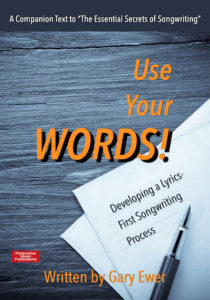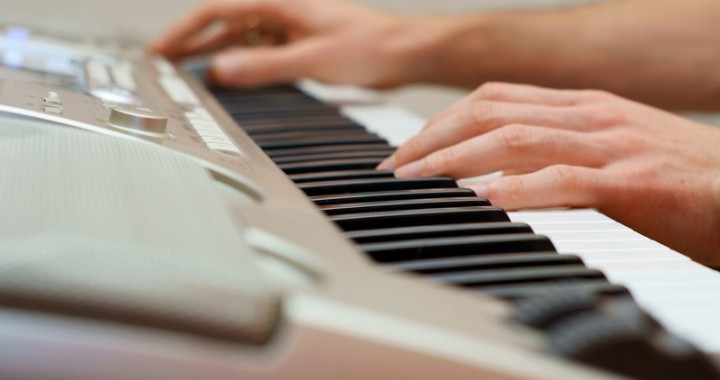 Chapter 5 of “The Essential Secrets of Songwriting” deals with how great melodies work, and shows you how to write tunes that partner up well with your lyrics. Right now, “Use Your Words! Developing a Lyrics-First Songwriting Process” is free with your purchase of the bundle.
Chapter 5 of “The Essential Secrets of Songwriting” deals with how great melodies work, and shows you how to write tunes that partner up well with your lyrics. Right now, “Use Your Words! Developing a Lyrics-First Songwriting Process” is free with your purchase of the bundle.
Here’s an interesting bit of melody-writing technique that comes from classic rock, but you can likely apply it to songs you’re writing today.
Back in 1969, Chicago released “Chicago Transit Authority”, and one of the big hits from that album was Robert Lamm’s “Beginnings.” The verse of that song starts in A major, then modulates downward to G major for the second half, before moving up again to A major for the chorus:

Changing key in the middle of a verse isn’t overly common, and it’s certainly even less common for the key to move downward, since downward key changes are often associated with the relaxing of musical energy. And as a verse progresses, you’d want to have more musical energy, not less. But in this case it works wonderfully.
Then there’s the verse and chorus melodies to compare: they’re pretty much identical. Both use the same upward-moving scale starting on E:

Normally, when you use the same melody for verse and chorus, you need to do something in the chorus that bumps things up a bit in the song-energy department. Usually, that’s bumping up the production: choruses will tend to be a bit louder and instrumentally busier than the verse.
Chicago does that by adding backing vocals in the chorus. But there’s a nice effect of “climactic high note” that happens in the chorus: even though both the verse and chorus hit that high E in the vocal melody, it sounds more climactic in the chorus. Why?
It’s mainly because of that dip down to G major that happens in the second half of the verse. That move to G major gives Lamm an opportunity to do an abrupt modulation back to A major for the chorus, and that quick key change injects a certain amount of energy, even though all he’s doing is simply returning to the opening key of A major.
And now, when he does that melodic scale passage upward in the chorus, even though it’s an identical melody to the verse, it sounds more energetic because it immediately follows a lower key.
It’s a perfect example of how playing around with key choice can have a lot to do with how we perceive musical energy.
In your own songs, you might find opportunity to do that, particularly if your verse is constructed of 4 longish phrases as “Beginnings” is. Let’s assume you’ve done it all to be in the same key. If so, you can see what it sounds like to nudge the second half of your verse down a tone. Lamm uses a Flat-III chord as a transition between the two halves, but you can experiment with your own way.
Then you’ll likely find it easy to do an abrupt modulation directly back to your opening key. The benefit should be that you’ll experience a shot of musical energy that sets up your chorus nicely.
 Written by Gary Ewer. Follow Gary on Twitter.
Written by Gary Ewer. Follow Gary on Twitter.
 Are you ready to have LYRICS take a much more important role in your songwriting process. You need to read “Use Your Words! Developing a Lyrics-First Songwriting Process.” Right now, it’s FREE with your purchase of “The Essential Secrets of Songwriting 10-eBook Bundle”
Are you ready to have LYRICS take a much more important role in your songwriting process. You need to read “Use Your Words! Developing a Lyrics-First Songwriting Process.” Right now, it’s FREE with your purchase of “The Essential Secrets of Songwriting 10-eBook Bundle”










